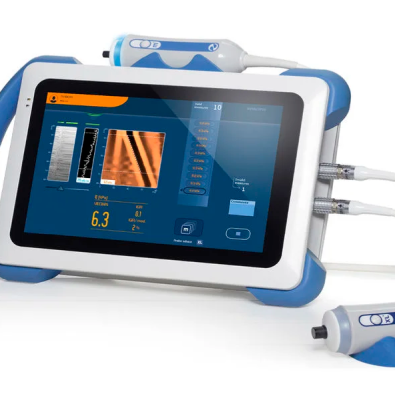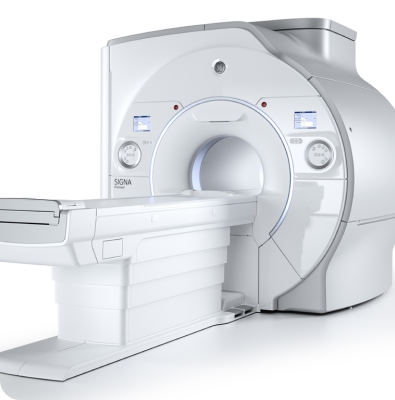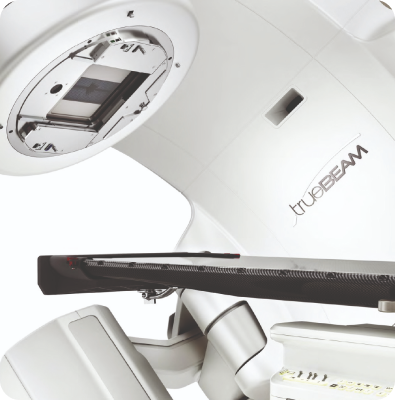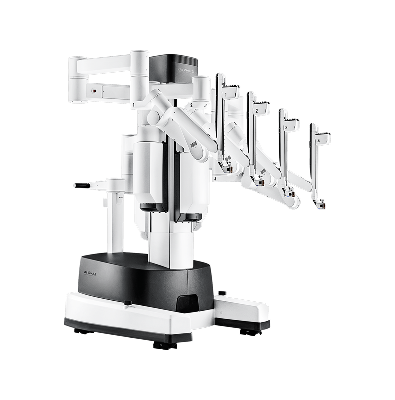What Is Breast-Conserving Surgery?
Breast-conserving surgery involves removing the area of the breast containing cancer along with a margin of healthy surrounding tissue, while preserving the remaining breast tissue and overall breast shape. With the increased availability of early diagnosis methods, this approach has become a preferred and widely applicable treatment option for many patients. During the same operation, the lymph nodes in the armpit (axilla) are also evaluated. The suitability for breast-conserving surgery depends on several factors, including the type, size, and extent of the tumor within the breast, as well as individual patient characteristics. Using oncoplastic surgical techniques, breast reconstruction can also be achieved even in cases involving larger tumors.
Breast-conserving surgery can be performed in most early-stage breast cancers and, in some cases, after preoperative chemotherapy in patients with advanced-stage breast cancer when tumor size is reduced. Although patients often worry about cancer recurrence after this procedure, studies have shown no difference in overall survival between patients undergoing mastectomy (complete breast removal) and those undergoing breast-conserving surgery. It is important to note that postoperative radiotherapy (radiation therapy) is generally required following breast-conserving surgery, as it significantly reduces the risk of local recurrence.
What Is Oncoplastic Surgery?
Oncoplastic surgery is a treatment approach that enables more patients to benefit from breast-conserving surgery for breast tumors. Even when large areas of tissue are removed using plastic surgical techniques, the breast can be reshaped, and the opposite breast can be symmetrically adjusted. This approach allows for complete cancer removal while achieving superior cosmetic results.
What Is a Mastectomy?
A mastectomy is the surgical removal of all breast tissue and is a treatment option for patients who are not suitable candidates for breast-conserving surgery. It is preferred for certain cancer types, large tumors, patients who have previously received radiotherapy to the breast, or those with specific individual factors. Various mastectomy techniques exist. Breast reconstruction can be performed simultaneously with the mastectomy or at a later stage using implants or the patient’s own tissues. In patients with hereditary cancer syndromes or genetic mutations detected before cancer develops, preventive bilateral mastectomies may also be performed.
What Surgical Procedures Are Performed on Lymph Nodes in Breast Cancer?
Lymphatic drainage of the breast primarily flows toward the axillary (underarm) lymph nodes. Assessing whether tumor spread has occurred in these nodes is essential for staging and treatment planning in breast cancer. In the past, axillary lymph nodes were routinely removed in most patients, but today, with advances in treatment, these nodes can often be preserved. Lymph node surgery can be performed either simultaneously with breast surgery or in a second session if needed. There are two main types of lymph node surgery.
What Is Sentinel Lymph Node Biopsy (SLNB)?
Sentinel lymph node biopsy involves identifying the first lymph nodes that receive drainage from the breast using special dyes or nuclear medicine tracers. These nodes are then examined to determine whether they contain cancer cells. In patients with no signs of axillary metastasis on clinical or imaging evaluation, 1–3 lymph nodes identified by this method are pathologically examined during surgery. If no spread is detected, extensive axillary dissection is avoided. This reduces complications such as pain, limited arm movement, and lymphedema. This technique can also be used in patients with advanced tumors who show a complete response to preoperative chemotherapy.
What Is Axillary Lymph Node Dissection (ALND)?
Axillary lymph node dissection is a surgical procedure in which most lymph nodes in the underarm area are removed. Although less commonly required today, it is performed in cases where cancer has spread to the axillary lymph nodes.
What Is Breast Reconstruction During or After Mastectomy?
Whether following breast-conserving surgery or mastectomy, breast reconstruction can be performed immediately during the same operation or at a later stage. Reconstruction may use prosthetic implants or the patient’s own tissues to restore breast shape and appearance.
As with most diseases, early diagnosis is key to achieving successful outcomes in endocrine disorders. Since symptoms of these conditions are often overlooked, regular check-ups in the Departments of Endocrinology and Endocrine Surgery are crucial. Endocrine surgery, which has advanced significantly in recent years, plays an important role in the treatment of endocrine diseases.
What Is Endocrine Surgery?
Endocrine surgery includes surgical procedures performed to treat diseases originating from the body’s hormone-producing glands. Within general surgery, endocrine surgery specifically focuses on diseases of the thyroid, parathyroid, adrenal (suprarenal) glands, and hormone-producing cells of the pancreas.
In our Endocrine Surgery Department, we perform surgical treatments for conditions such as nodular or diffuse thyroid enlargement, thyroid cancers, parathyroid gland disorders, and adrenal gland diseases.
What Is a Thyroid Nodule?
Thyroid nodules are mass-like formations within the thyroid gland. They may be solid, cystic (fluid-filled), or mixed in structure.
What Are the Symptoms of Thyroid Nodules?
Most thyroid nodules do not cause symptoms unless they are large enough to create visible swelling in the neck. They are often detected incidentally during physical examinations or ultrasonography. Some nodules may press on the airway or esophagus, leading to shortness of breath or difficulty swallowing. Overactive nodules may cause symptoms such as palpitations, excessive sweating, and hand tremors due to elevated thyroid hormone levels.
How Are Thyroid Diseases Diagnosed?
Diagnosis of thyroid diseases is made through neck examination, ultrasonography, and blood tests evaluating thyroid hormone levels. Physical examination may reveal palpable nodules or signs of hormone imbalance. Ultrasonography provides detailed evaluation of the thyroid structure, presence of thyroiditis, and characteristics of any nodules. Blood tests help diagnose hyperthyroidism, hypothyroidism, and other thyroid-related disorders. Suspicious nodules are further evaluated by fine-needle aspiration biopsy (FNAB), in which cells are examined microscopically to determine the need for surgery.
What Are the Current Surgical Treatments for Thyroid Diseases?
In Graves’ disease, the most common cause of hyperthyroidism, total thyroidectomy (complete removal of the thyroid gland) is performed. If hyperthyroidism is caused by a single overactive nodule and no other nodules are present, a unilateral thyroidectomy is performed. In cases of thyroid cancer, total thyroidectomy along with removal of lymph nodes in the affected area may be necessary. In some special cases, a partial or unilateral thyroidectomy may be sufficient. These surgeries are performed through a 3–4 cm incision in the front of the neck.
What Is the Parathyroid Gland?
The parathyroid glands are four small glands located on the thyroid gland on both sides of the neck. They secrete parathyroid hormone (PTH), which regulates calcium balance in the body.
What Are Parathyroid Gland Disorders?
Parathyroid disorders may involve enlargement and overactivity of one or more glands, leading to excessive hormone production — a condition known as hyperparathyroidism. When only one gland is affected, it is called a parathyroid adenoma; when all glands are enlarged, it is referred to as parathyroid hyperplasia. Elevated PTH levels cause high calcium levels in the blood, which can lead to kidney stones, osteoporosis, vascular calcification, and mood disorders.
How Are Parathyroid Gland Disorders Diagnosed?
Hyperparathyroidism is typically identified through elevated calcium levels in blood tests, often discovered incidentally or during evaluations for kidney stones or bone loss. Parathyroid adenomas can be detected by ultrasonography, while hyperplasia is diagnosed through elevated calcium and parathyroid hormone levels even if imaging does not show enlargement. Special imaging studies, such as parathyroid scintigraphy, are used to locate abnormally positioned glands.
What Are the Current Surgical Treatments for Parathyroid Gland Disorders?
In cases where one or two parathyroid glands are enlarged and overactive, targeted parathyroidectomy — a minimally invasive procedure — is performed through a small incision to remove the affected glands. In diffuse hyperplasia involving all glands, subtotal parathyroidectomy is performed, in which all glands are exposed and a portion of one gland is preserved while the others are removed.
What Is the Adrenal Gland?
Also known as the suprarenal gland, the adrenal gland consists of two hormone-producing glands located above each kidney. These glands secrete essential hormones vital for metabolism, blood pressure regulation, and stress response.
What Are Adrenal Gland Disorders?
Adrenal gland disorders include pheochromocytoma (characterized by episodes of palpitations, hypertension, and facial flushing), Conn’s syndrome (manifesting with low potassium, hypertension, and fatigue), and Cushing’s syndrome (caused by excessive steroid hormone production). These are among the adrenal conditions that may require surgical treatment.
How Are Adrenal Gland Disorders Diagnosed?
Most adrenal disorders are diagnosed by detecting elevated hormone levels in the blood and identifying adrenal masses through imaging methods such as CT, MRI, or scintigraphy.
Today, most adrenal surgeries are performed laparoscopically (minimally invasive), allowing removal of the diseased gland through small incisions and enabling patients to recover quickly.







